

He looks up at the sky, shading the sun’s rays with his hand, wondering when it will rain. The phone in his pocket buzzes with a market update. Corn futures are up again, and a text reads, “Headed to town, feed truck is on the fritz.”
Much of the cattle-feeding business is outside a manager’s control, but quality cattle care, that Kendall Hopp can guarantee.
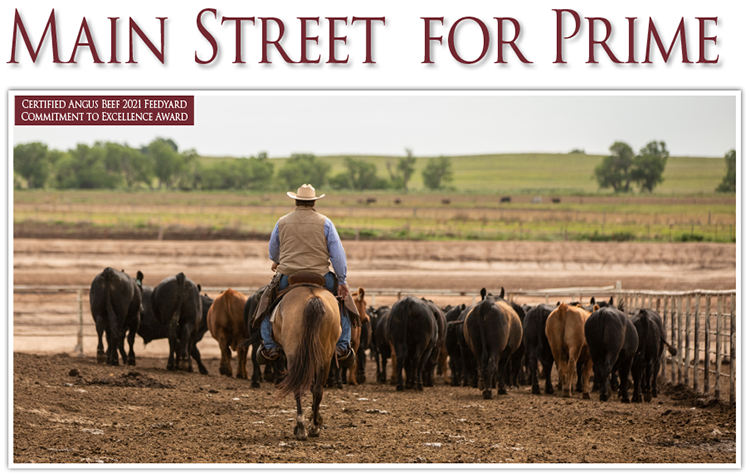 “Pen riders are worth their weight in gold,” Kendall Hopp says. It’s an art just as much as it is a science to pick out which calves need attention. |
He plans for the volatile, hopes for the best and deals with the rest as it comes. The first thing on his list begins with treating people right, because Hopp knows happy folks manage cattle more consistently, leading to healthy cattle that perform.
He shared this philosophy with Bill Shaw 14 years ago. At the time, Shaw Feedyard of Ashland, Kan., felt like any other commodity yard where color, shape and size would vary with a ride down the row. Today, Hopp manages a sea of pens dotted with high-quality Angus feeders that return on the rail.
Different skill sets make their business thrive. Hopp manages the feedyard; Bill handles the money; and his son Brett Shaw takes care of the farm, stockers and other duties as assigned.
Their teamwork, values and ability to consistently raise high-quality beef earned Shaw Feedyard Certified Angus Beef’s (CAB) 2021 Feedyard Commitment to Excellence Award.
Evolution
In 1964, with just four pens, Bill’s father, Jim, began feeding cattle. He made up for what he lacked in experience in market knowledge, the cushion of capital and a desire to figure it out. The yard grew with small successes, and Jim invested dollars into infrastructure as he learned.
As a kid, it was Bill’s playground. From drawing in the dirt, he grew to fiddling with rations. Then, after earning a degree from Kansas State University, the feedyard became his full-time job.
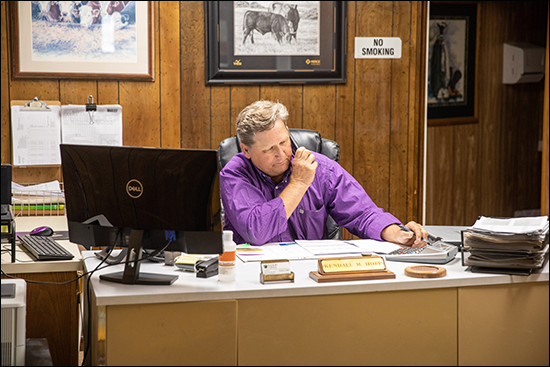 In between running bunks, Kendall Hopp can be found in the yard office watching the futures and running the numbers. |
“I can remember coming out first thing in the morning when I was a little kid and riding the feedtruck with dad,” Brett says.
There weren’t any computers or the “fancy stuff” they have today. Bill made do with paper and pen, writing rations and ingredient weights down as he went, scribbling observations as he checked bunks.
“I can still see him walking around, feeding cattle with that little piece of paper hanging out of his mouth,” Brett says.
Now, it’s Hopp who runs the bunks and formulates the rations, working in tandem with the father-son team.
Optimized management
The 7,500-head feedyard is in an area Hopp likens to Main Street for prime cattle country.
Just 45 miles from two major packing plants in Dodge City, with a network of quality-minded cattlemen nearby, Shaw Feedyard fits the locality like a trendy restaurant downtown. The climate is favorable for keeping pens of fed steers and heifers comfortable and thriving. The Kansas wind keeps even the hottest summer days bearable.
They’re surrounded by rich grain resources, chopping silage and grain from their own fields. Any outside feeds — like hay, wet distillers’ grains, and corn — are sourced within a 100-mile radius.
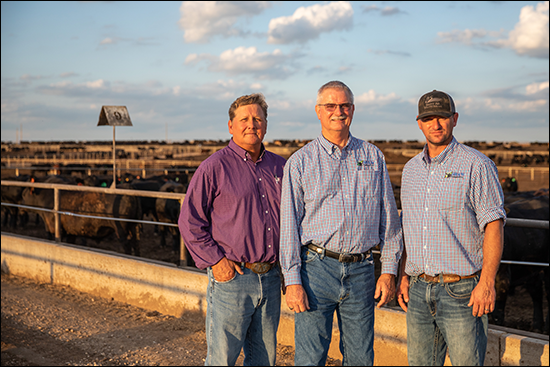 Different skill sets make their business thrive. Kendall Hopp (left) manages the feedyard; Bill Shaw (center) handles the money; and Brett Shaw takes care of the farm, stockers and other duties as assigned. |
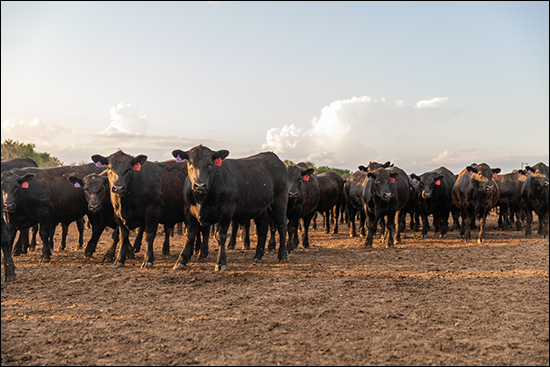 Comfort is a priority. The pens are kept clean, dry and stocked with fresh water, giving cattle everything they need to convert feed to beef. Everyone at Shaw’s specializes in individualized cattle care. Healthy animals are crucial to performance, and as a custom-feeding yard, their reputation for top-notch management keeps the pens full. |
Like the restaurant, if they can’t sell a good plate, there won’t be a customer tomorrow. As a custom feeder, it takes the right genetics (or ingredients), and Hopp focuses on making them reach their full potential.
“Certified Angus Beef put targets for us to beat, and then they rewarded us for that,” Hopp says. “I guarantee you, if you give us, an American rancher or farmer, an incentive, we’ll meet that target. And man, the purebred breeders are really producing something we can work with.”
It’s a different sense of local. They access their supply and support the state economies until harvest, when much of their beef is shipped to more populated areas.
“It’s our job to feed strangers,” Brett says. “It’s not a burden, because I know the beef that we’re putting in front of them is a consistent, efficient, sustainable product, and it will be for generations to come.”
They make the most of their resources. Every year, Brett puts nearly 1,000 stockers to graze grass in the summer, and 1,000 more are put on wheat in the winter. Then they’re brought into the feedyard at the end of the grazing period, where they’re finished.
High-quality input equals high-quality output when managed with precision. Hopp’s punctuality means cattle feeding starts at 6:30 a.m. and not a minute later.
“I’m very particular about when the truck drivers get here,” he says. “They get the same sheets every day, so it’s the same routine. That’s how we train our cattle.”
He closely monitors the bunks, ensuring they have just enough — a few crumbs are a good sign he’s feeding the right amount.
Handled with care
Once feeding is underway, pen riders saddle up. They track cattle exhibiting signs of sickness — treatment date, medicine administered, and withdrawal time. Hopp says his pen riders are worth their weight in gold.
“It’s more of an art than a science,” he says. “You can train someone, but some have it, and some don’t.”
Comfort is a priority. The pens are kept clean, dry and stocked with fresh water, giving cattle everything they need to convert feed to beef.
Everyone at Shaw’s specializes in individualized cattle care. It’s vital to both customer and cattle management. Healthy animals are crucial to performance, and as a custom-feeding yard, their reputation for top-notch management keeps the pens full.
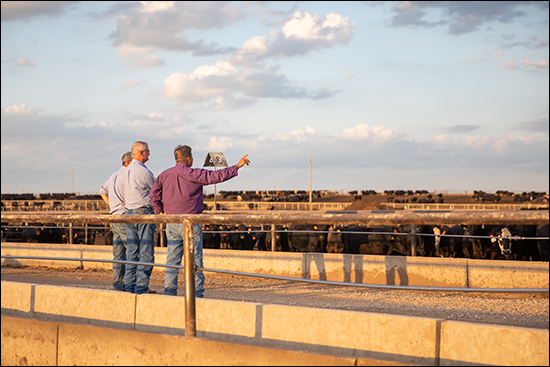 Ownership is more than whose name is on the yard. Every employee at the feedyard is encouraged to own what they do and treat the animals and equipment as if they owned them. |
Everyone at the yard is Beef Quality Assurance (BQA)-certified. It’s their guarantee that animals have been well taken care of and will produce a good product.
“The packer knows when he comes to Shaw Feedyard, he’s going to find animals that have been treated humanely,” Hopp says.
A mix of human touch and technology power the yard today. Steam-flaked rations, mixer trucks, GPS monitors, a consulting veterinarian, a nutritionist, digital data, and reporting support the Shaw crew in their mission for quality.
Everything is weighed when it enters the feedyard. While cattle with the same owner stay together, they may be sorted three or four times as they grow.
“If you have 100 head, about 30% will finish a little quicker,” Hopp says he’s learned.
Because genetic potential is often consistent, weight is the best gauge.
It’s not unusual to see pens grade 100% Choice with a high percentage meeting requirements for the CAB brand and Prime.
“Certified Angus Beef provides the best consistency of any product I’ve seen,” Brett says. “That’s a direct result of how we handle our cattle.”
They are just one piece of the larger puzzle that supplies premium beef, but hitting the high target is no accident. For the team at Shaw, it’s intentional management, planning each day to do their best for each other and the livestock.
“If we can do that consistently,” Bill says, “We know we’ll keep feeding cattle.”
Editor’s note: Morgan Boecker is producer communications manager for CAB.
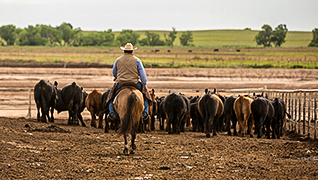
Kansas cattle feeders paved main street for Prime.
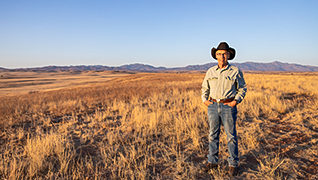
Ross Humphreys wins CAB honors in the prime of his life.
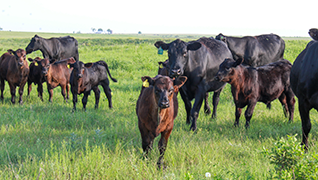
Lessen stress, improve calf health for a better start on feed.
Copyright © 2021 · All Rights Reserved · My Website